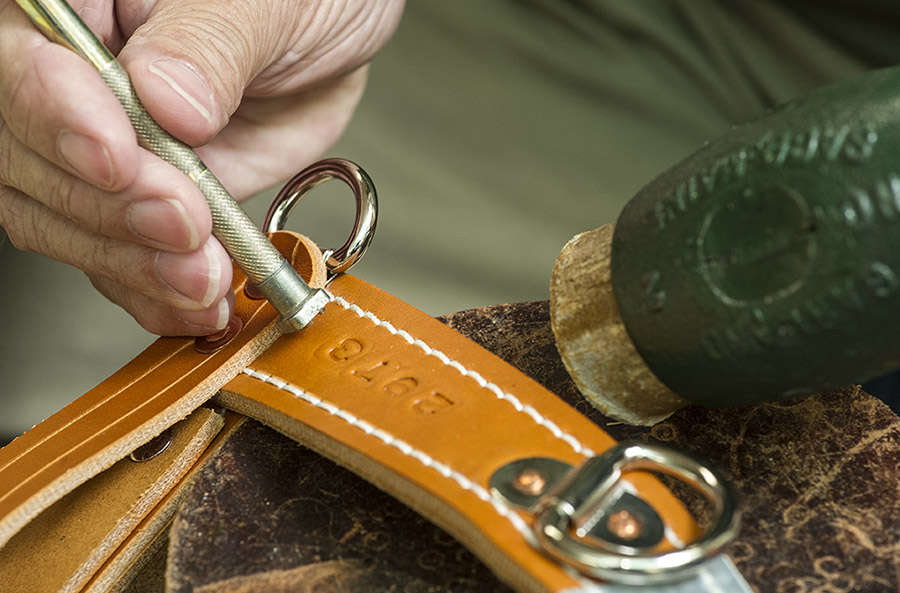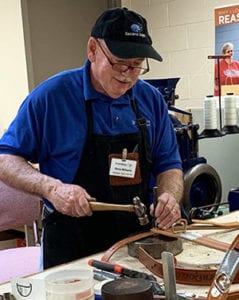Old Skills, New Friends – Making Harnesses for Leader Dogs

By Steve Williams

After working as an orthotist (a person who makes custom orthopedic devices) for 39 years, my wife and I closed our family business in 2015. Shortly after retiring I started volunteering in the tack room. I was very excited to be part of Leader Dogs for the Blind (LDB) since I grew up nearby and had a family connection.
My daughter, Ana Williams, worked for several years as a guide dog mobility instructor for English and Spanish-speaking clients. While she worked at LDB, my wife and I had an opportunity to take a tour of the facility. I saw my retirement future as soon as we stepped into the tack shop. This is where the tack shop volunteers assist with assembling and repairing leather harnesses and tie-downs for the dogs. Some of the harnesses are also customized to accommodate a dog or handler’s physical stature. When I trained many years ago to become an orthotist, most of the devices were made from leather and metal. Although technology has changed over the years to incorporate more sophisticated materials, I always loved using my old school leather work skills.

The steps to make a harness have evolved since the tack shop opened many years ago and we routinely try to improve on little details to perfect the finished product. I really like to study the old harnesses that clients return to inspect for wear issues that might affect the durability or comfort of the harnesses. Feedback from the vet clinic and instructors also helps us improve the design. A few years ago, a vet technician mentioned that the copper rivets on the side of the harness were rubbing against a dog’s torso. We knew that if the rivets were irritating one dog, there was potential that several dogs were encountering the same issue. We started rounding the top of the rivets so there wouldn’t be any edges to aggravate the dog’s skin. We rely on this sort of feedback and teamwork to make the equipment comfortable since the dogs can’t tell us how they are feeling.
I especially love using our vintage sewing machine that was donated by the Hazel Park horse racetrack’s tack shop. Like the tack room volunteer crew, it is a little finicky and temperamental but when it’s time to go to work it does a marvelous job. The volunteer crew consists of myself, Brent Fecteau, Rob Walker and John Bastion. We enjoy a unique camaraderie and I couldn’t have hoped to share my retirement time with a nicer group of people. We gab like a bunch of old hens while we produce about 300 harnesses each year. I feel so lucky to be able to spend my retirement doing what I love. My wife, Mary, feels similarly blessed and volunteers as a client activity assistant with the Spanish-speaking clients and as a canine center receptionist. I sincerely hope that all retirees are as fortunate as we are to find a place like LDB to use their talents.
The post Old Skills, New Friends – Making Harnesses for Leader Dogs appeared first on Leader Dogs for the Blind.




Post a Comment